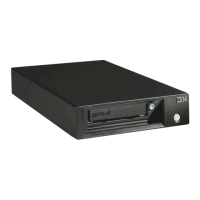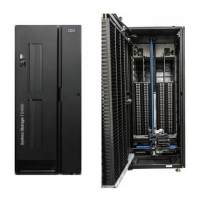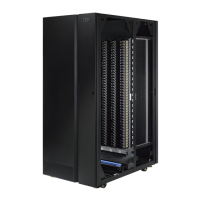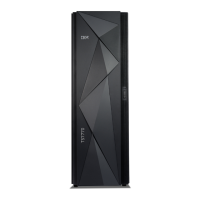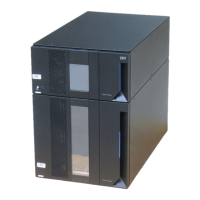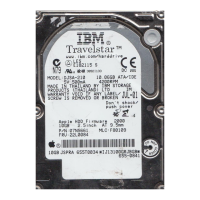The Operator Panel operates in two basic modes:
v User Interaction mode - Mode that is employed when a user is pushing keys on the Operator Panel.
v System Driven mode - Normal mode of operation where the Operator Panel displays status in
response to commands issued from the drive's internal interface.
When an Operator Panel key is pressed and released, the Operator Panel automatically changes to User
Interaction mode. User Interaction mode continues until 3 minutes after a user stops pushing keys, or the
requested accessor action stops, whichever is longer. Then, the Operator Panel returns to System Driven
mode.
If necessary, the Operator Panel automatically changes to System Driven mode. When this change occurs,
the library remembers what the user was doing before the display mode changed.
Any operational conflict between commands that are received over the host interface or the Web User
Interface and those commands that are entered by way of the Operator Panel are avoided with a
reservation mechanism on a first-come, first-served basis. Operator Panel commands are canceled by an
Operator Panel logout or timeout.
Library firmware does not allow a user to select an impossible request. Those situations include, but are
not limited to -
v Moving a cartridge from any source to a position occupied by another cartridge
v Moving a cartridge from an empty cartridge position
v Loading a cartridge from any source to a full drive
v Unloading a cartridge from an empty drive
Any error that is detected by the library or drive controller and not recoverable through predetermined
firmware algorithms is considered unrecoverable. When an error occurs, an error code is displayed on the
Operator Panel display and the error LED is ON. The error code remains on the Operator Panel until a
key is pressed, which causes the Operator Panel to return to the Home Screen. Numeric error codes are
used for unrecoverable errors. Otherwise, text status messages are displayed.
When the library powers ON or resets, it goes through several internally controlled initialization
processes, called the Power-On-Self-Test (POST).
Front panel LEDs
All LEDs are updated during power ON and reset sequences. At power ON or software reset, all LEDs
turn ON as soon as POST allows. When initialization starts, all LEDs turn OFF and the Ready/Activity
LED flashes at a rate of approximately 2 seconds per cycle. When the mechanical initialization is
complete, the Ready/Activity LED stops flashing and turns ON.
If a library failure occurs, the Ready/Activity LED turns OFF and the Error LED turns ON. The Operator
Panel also displays an appropriate error code to help identify the failure.
The following are more operational details of LEDs:
v The Ready/Activity LED (▌6▐ in Figure 8 on page 13) turns ON any time the unit is powered ON and
functional. The Ready/Activity LED flashes whenever there is library. This LED also flashes when the
library is offline.
v The Clean Drive LED (▌7▐ in Figure 8 on page 13) turns ON when a “cleaning required” command is
issued by the drive. The LED turns OFF after a successful drive cleaning operation.
v The Attention LED (▌8▐ in Figure 8 on page 13) turns ON to indicate that a piece of media is
bad/marginal, or invalid. The LED turns OFF when all marginal and invalid cartridges are exported
from the library. The Attention LED also turns ON if Autoclean is enabled and no cleaning cartridge is
in a cleaning position.
14 IBM TS2900 Tape Autoloader: Setup, Operator, and Service Guide Machine Type 3572
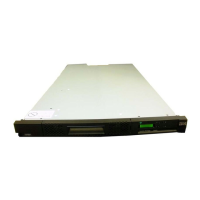
